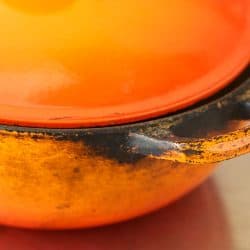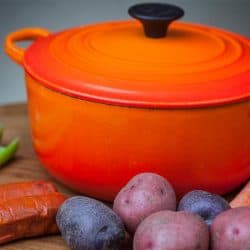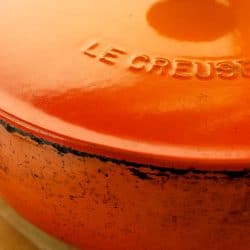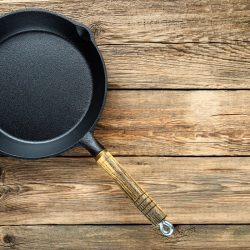Enamel cookware has become very popular these days. They are colorful, durable, and non-stick. Even so, there is a lot of speculation as to whether or not they are safe to put in the oven. We have done the research and have all you need to know about enamel cookware.
Modern-day enamel pots are safe to use in the oven up to 500℉. If you own antique enamelware, then there is an increased risk of exposing yourself to toxins. This is also true of pots made in countries where production standards are lower. To be safe, you should avoid using the pot if the enamel is scratched or cracked.
Enamel pots are great for cooking a variety of dishes both in the oven and on the stovetop. To keep your cookware safe, there are some things you can do to prevent any chips or scratches. Keep reading for tips, guidance, and a deeper look into the safety of enamel pots.
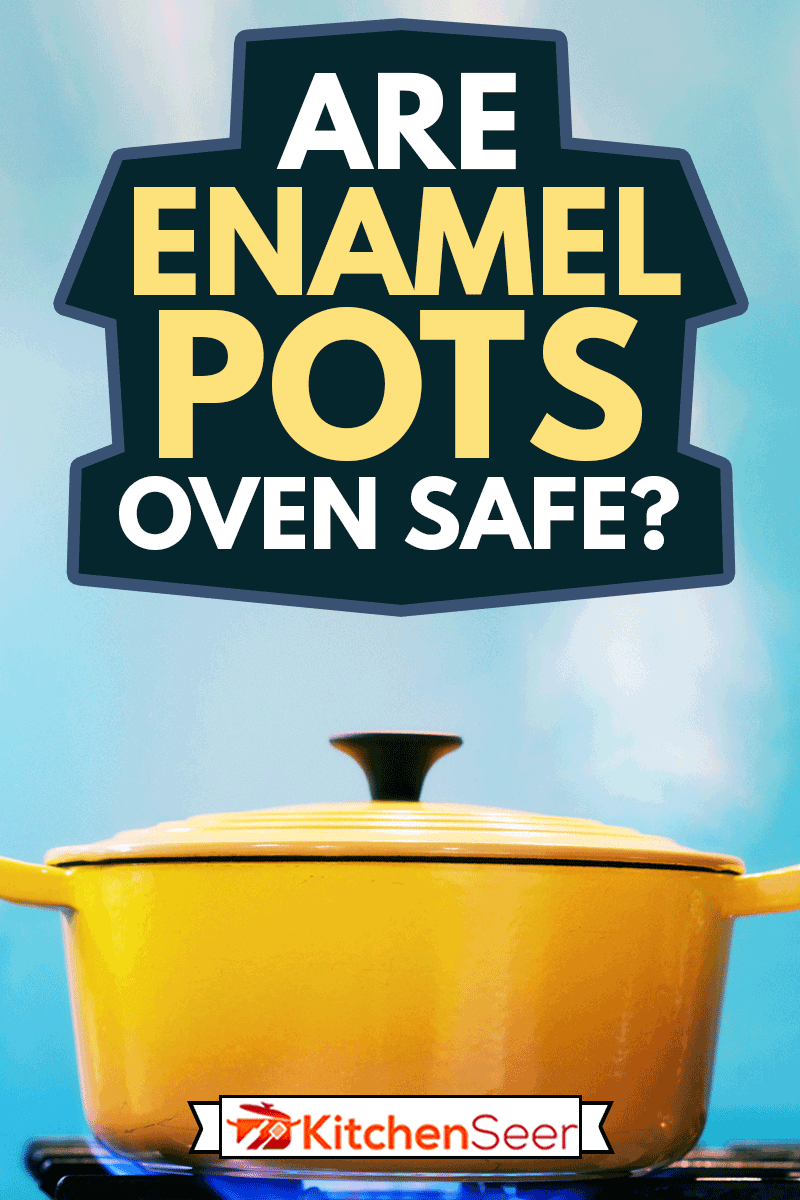
Is enamel safe for baking?
Yes, enamel pots are safe for baking. You may be concerned about toxins leaching into your food, but there is no need to worry about that with enamel. As long as there is no damage to the inside coating, it will be safe.
There are a few circumstances that will make your enamel bakeware less oven safe. The first reason is if the enamel contains lead. If your pot is very old, there is a chance that it can contain lead. Also, not all countries have the same FDA regulations on lead coatings.
Check out this enamel stockpot on Amazon.
Aside from the contents of the coating, if there is damage to the pot, you shouldn't cook or bake with it. Any chips on the inside could mean that more enamel is chipping off and getting into your food.
How do you know if your enamel pot contains lead?
Until the 1970s, there was no regulation on lead in cookware, so it was present in high amounts. These antique pieces are safe to touch but not safe to cook with.
Even if you don't know the year your pot was made, there is a way to find out its lead content. You can use at-home lead testing kits to check the lead content in all of your bakeware. But if you buy a new pot and it's made in a country with FDA guidelines, then you can be sure that it's safe.
You can find these lead testing swabs on Amazon.
What is the difference between porcelain and enamel?
You may see porcelain and enamel mentioned together a lot. They can look similar at first glance. The primary difference is that porcelain is a solid material. Conversely, enamel is a strong glass-like coating.
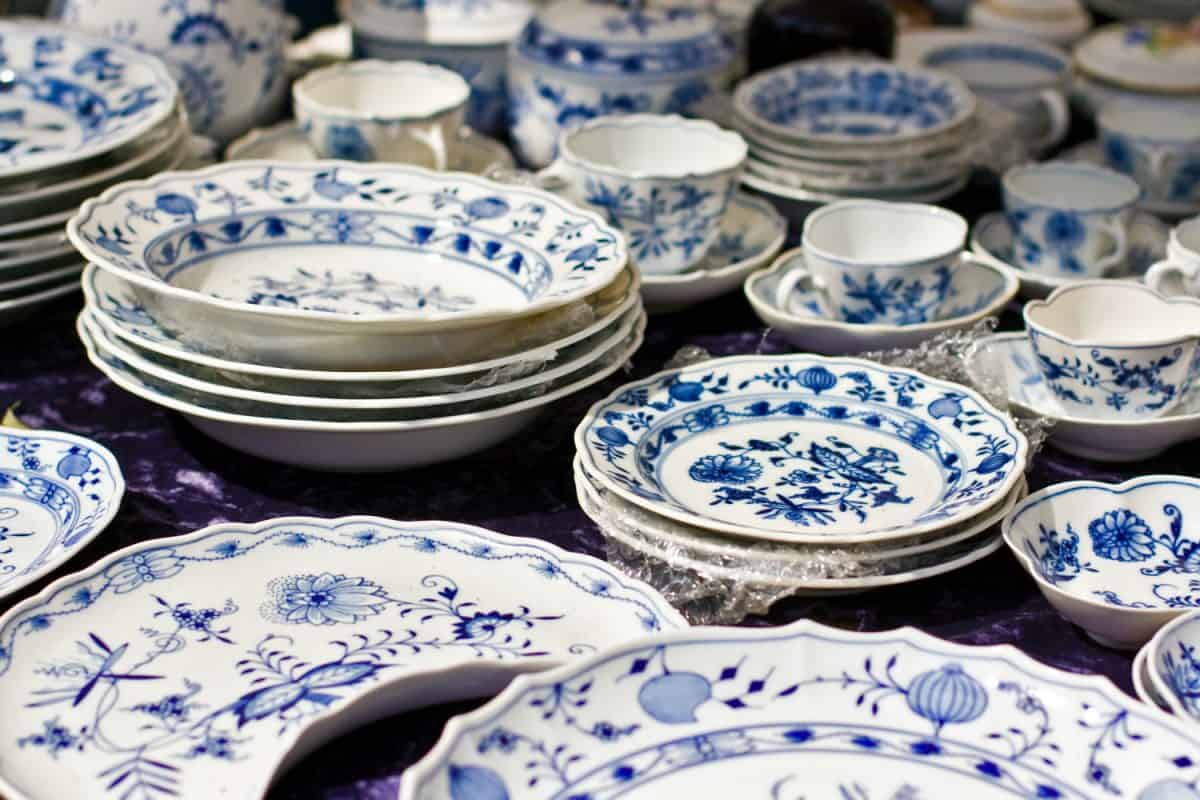
A special type of clay is used to make porcelain, which undergoes a baking process. This creates a solid white material throughout. Porcelain is the material used to make fine china and teacups. The material on its own is very brittle.
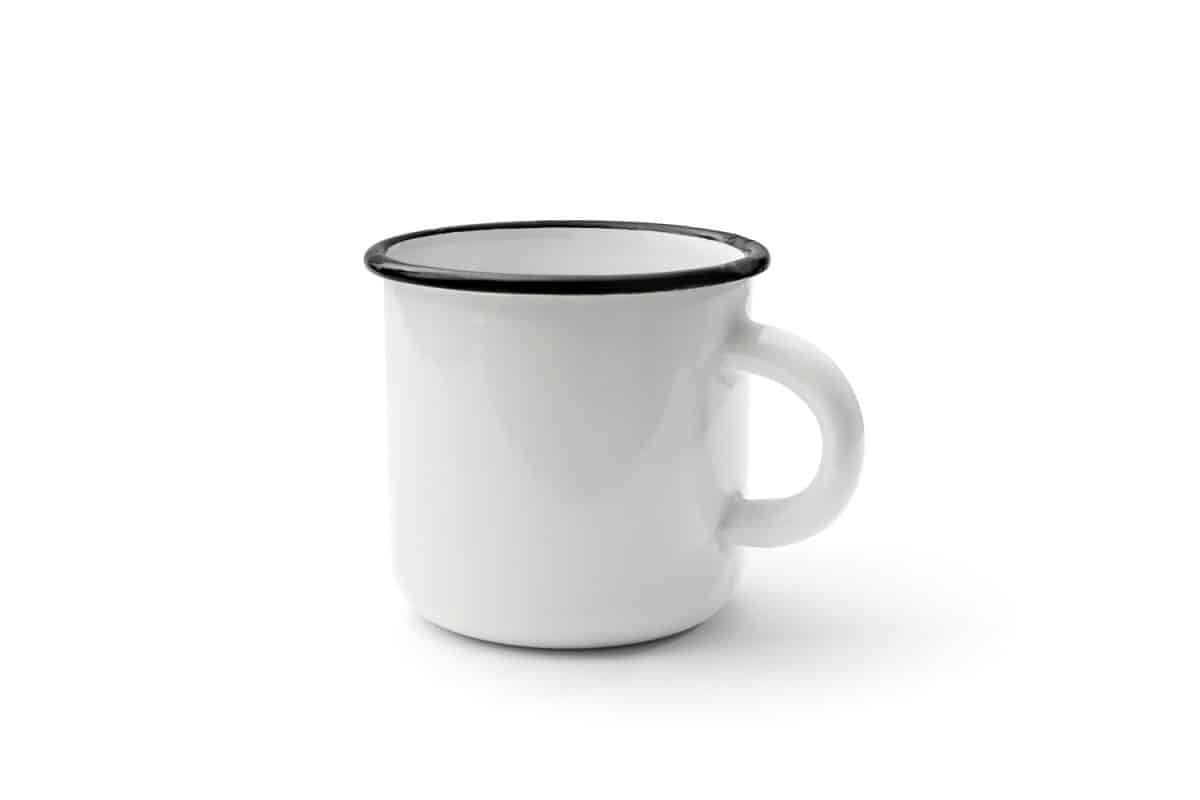
Heat is used to fuse the enamel to another material, creating a glass-like surface. It has a similar finish to porcelain, but it is not a solid material on its own. You will often find enamel coatings on cast iron or stainless steel, like in the mug pictured above. This coating can crack or chip, but due to it coating a metal, it is a better option for durability.
What are enamel pots good for?
Enamel pots are great for a variety of things. Just about anything you can think of cooking in the oven or on a stovetop, you can make with enamel pots. You can dep fry, sautee, stew, simmer, braise, and more.
An example is if you are coking a gravy or a stew. You should use an enamel pot for dishes that have long simmering times. You can also reach for an enamel pan for searing and broiling meat. These pots can make a seamless transition from stovetop to oven. Enamel cookware is even great for cakes and bread.
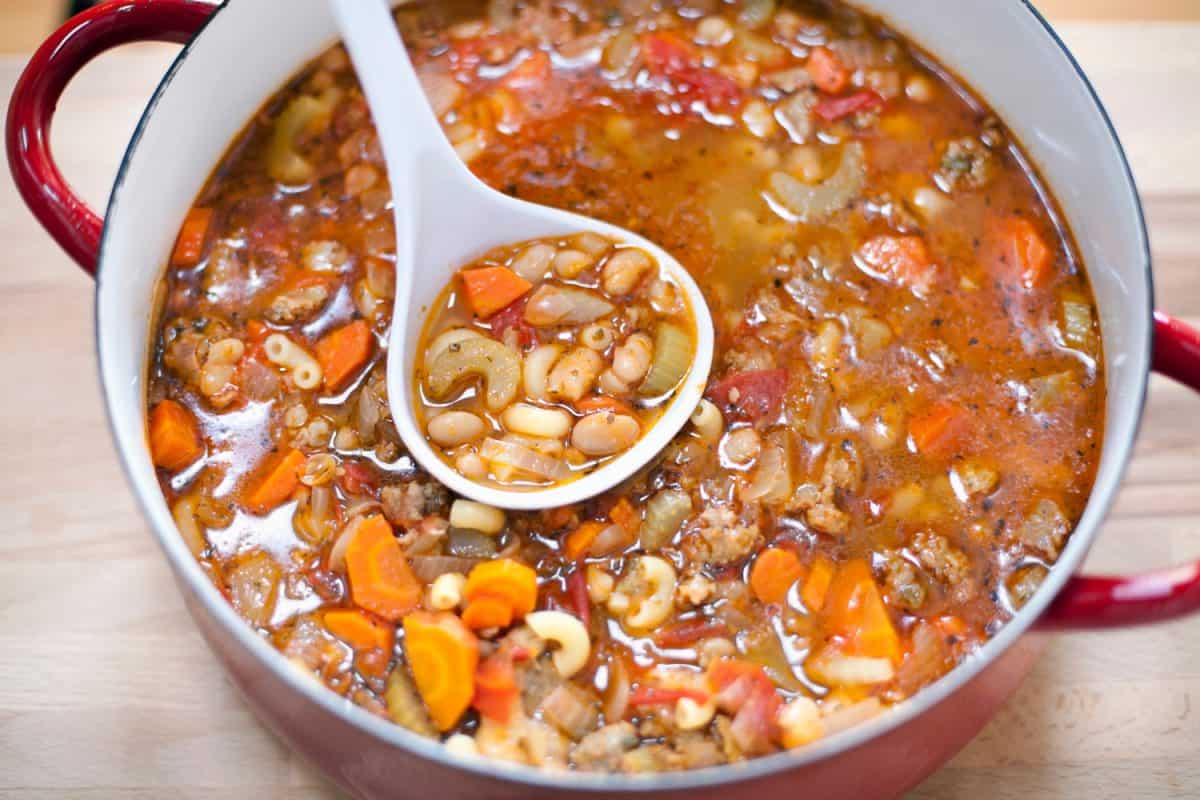
Enamel pots are often even better at these cooking functions than regular cast iron cookware. That being said, they can be used to make just about any type of food on the stove or in the oven.
What are the advantages and disadvantages of enamel cookware?
The added utility of the enamel coating makes enamel cookware universal. Even so, there are a few drawbacks to them. Their ability to maintain consistent heat is one of the most popular advantages of enamel cookware. Along with that, they are naturally non-stick and will not rust.
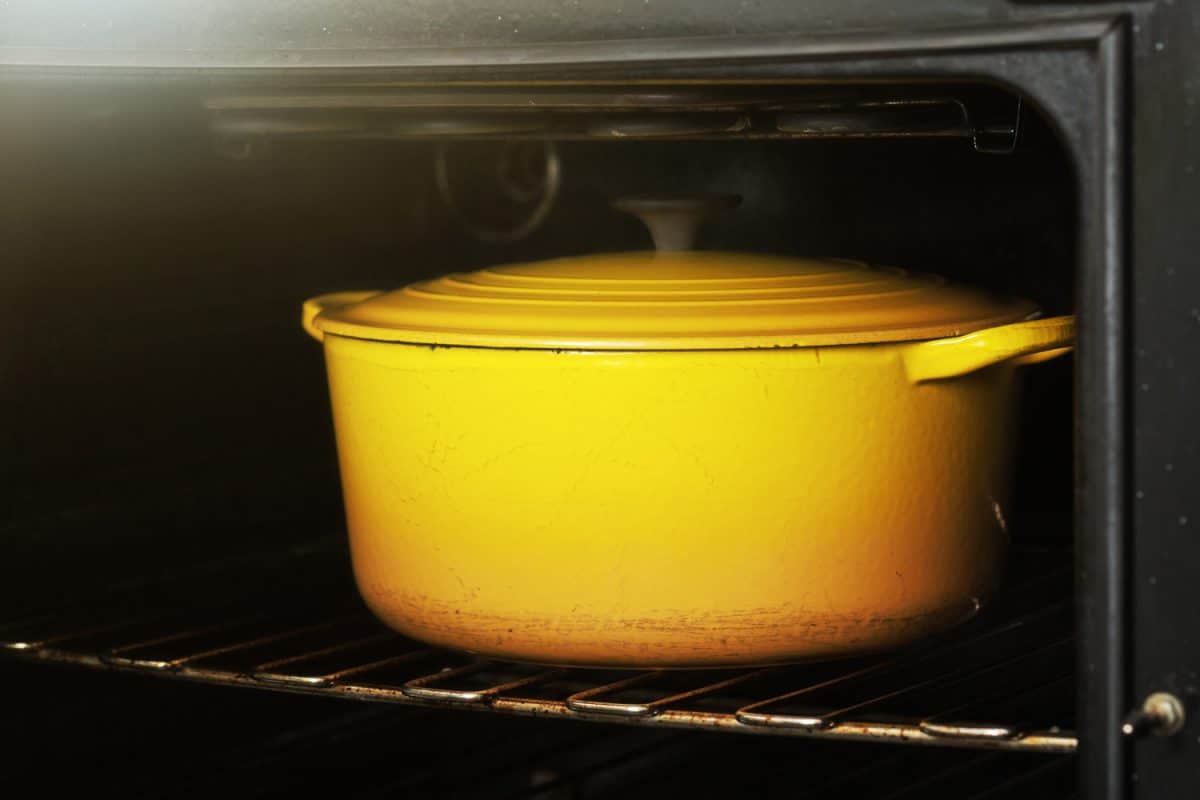
Enamel cookware is an excellent alternative to regular cast iron or steel cookware because the coating adds a lot of utility. The enamel is perfect for distributing heat evenly, so it is a good option for cooking in the oven. The coating also creates a non-porous surface that makes them safe for acidic foods and dishwashers.
The cost of enameled cookware is one disadvantage. Additionally, the use of utensils and drastic temperature changes can cause damage and cracks in the enamel coating. The all-around enamel coating also makes the pot noticeably heavier than plain cast iron.
The benefits of using enamel cookware far outweigh the disadvantages in many cases. You can't make them lighter, but there are ways to defend them against damage. With proper use and care, enamel cookware will last a long time.
How to avoid damage to your enamel cookware
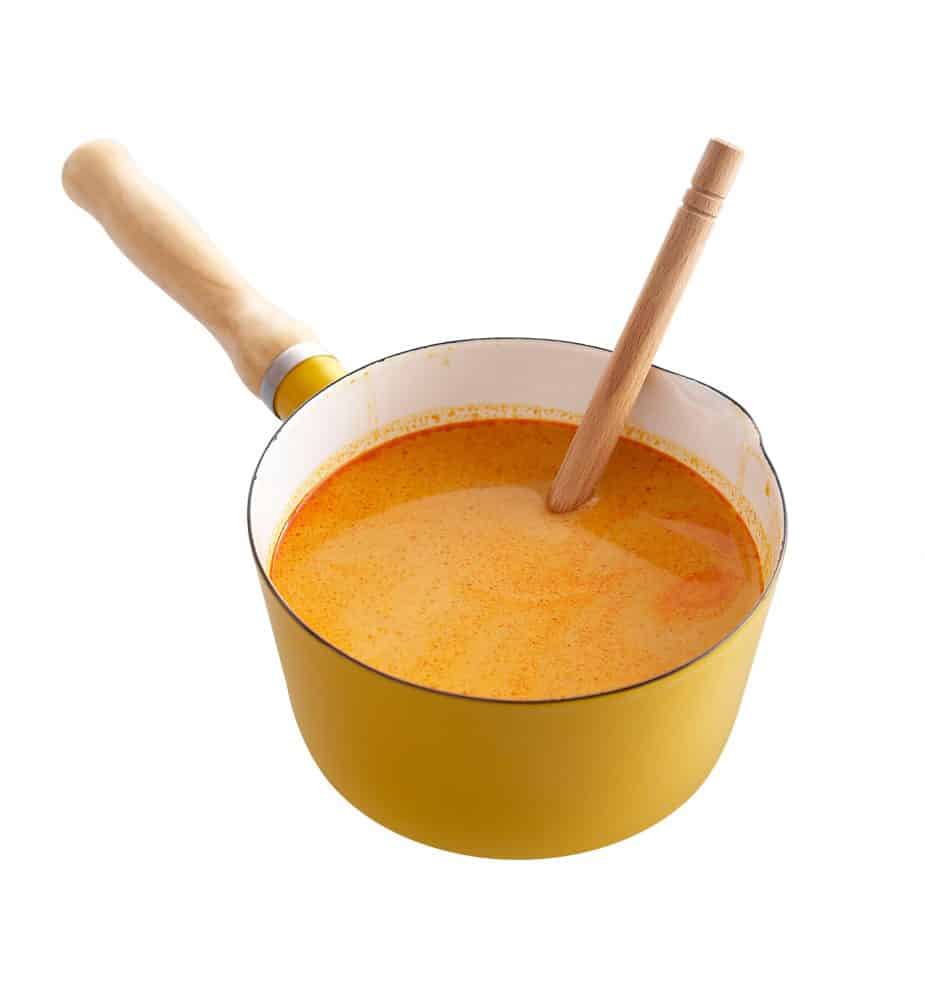
The enamel coating is the most important and delicate aspect of your cookware. As long as you take care of it, you will be able to have the pot for years to come. A popular band of enameled cookware is Le Creuset; they even offer a lifetime warranty outside of user error.
Utensils
The use of proper utensils is your first line of defense against damage. These coatings are glass-like and will get scratched from metal utensils. Wooden and silicone utensils are the best options to avoid scratching the enamel.
You can find this set of wooden utensils on Amazon.
You can use metal utensils with special care if wood or silicone is not available. Be careful not to scrape them along the enamel coating. If you are looking to make very smooth soups, read our article on if you can use an immersion blender in an enameled cookware.
Cleaning
Cleaning your enamel cookware properly can make a huge difference in its working life. The biggest culprit of cracking and warping is temperature changes. You must allow your cookware to cool completely before washing.
The worst thing you could do is plunge a hot pot into cold water. If you are in a hurry, fill the pot instead with warm water and soak it before washing. To further eliminate the need for scrubbing, you can even boil that warm water in the pot to get everything off. This video demonstrates a simple cleaning technique:
You should only scrub after your pot has cooled completely. While cleaning, be sure to use softer abrasive tools, avoid things like steel wool.
Proper heating
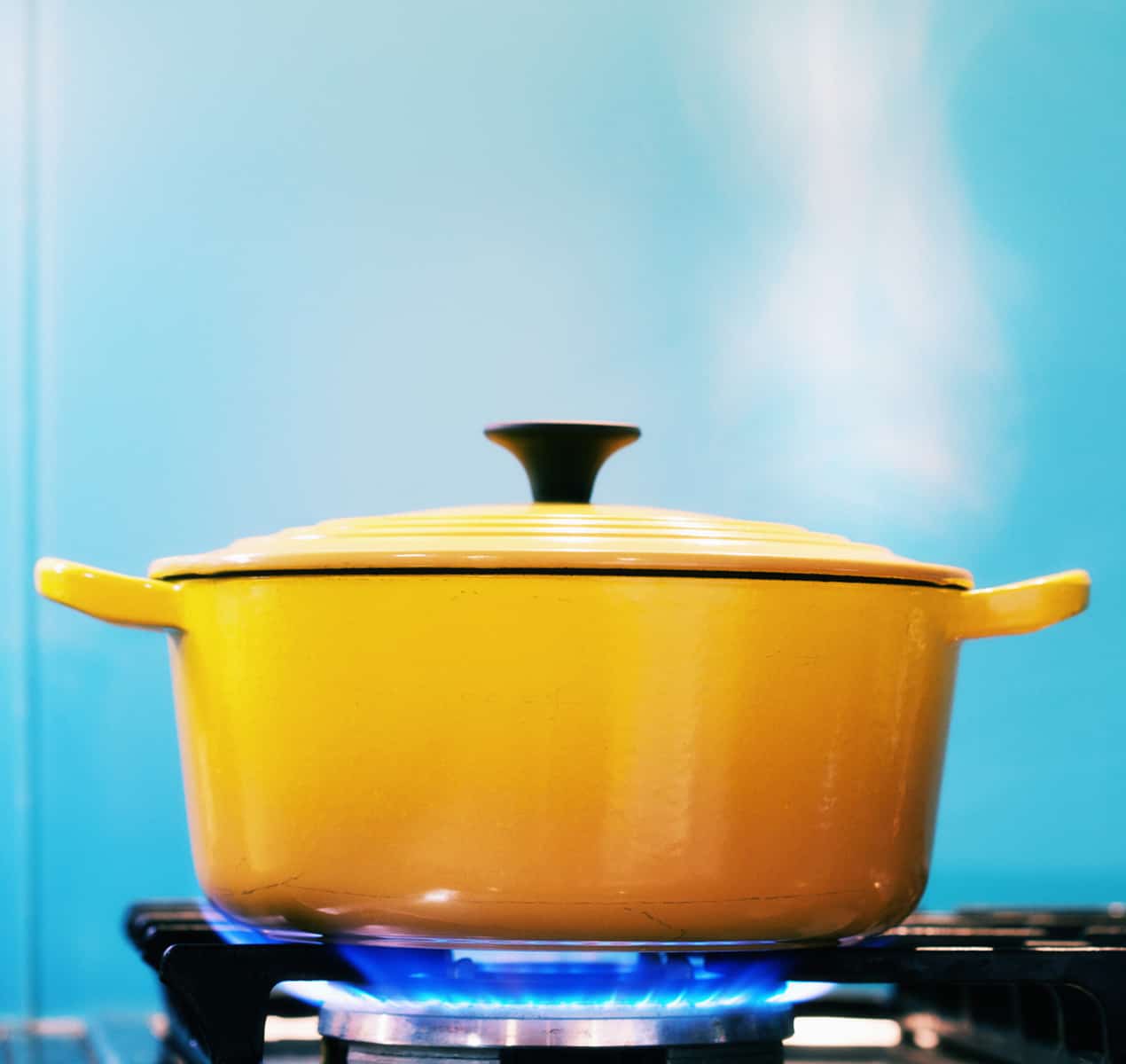
Lastly, you need to be mindful of the amount of heat you use on this cookware. The enamel coating is very strong and durable but can be damaged from excessive heat. Since the coating helps efficiently heat the pan, you should not preheat on high and then lower the heat for cooking.
It may take a little longer to heat up, but medium to low heat is the sweet spot for enameled pots. High temperatures (maximum 500 ℉/ 260℃ ) should only be used for boiling water for pasta or vegetables. Some cooktops allow you to set exact temperatures; read our article on if you can use enameled cookware on induction stovetops.
In Closing
Enamel pots are safe for use in the oven. The coating can resist sticking during long cook times. That, along with excellent heat distribution, makes them perfect for baking in the oven. Enamelware can handle cooking any meal.
Taking good care of your enamel cookware will keep it in great condition for years. Avoid dropping or crashing your enamelware against hard surfaces to prevent cracks. You should inspect the enamel for chips before and after you cook or bake with them. Chips can expose the metal core and get shards of enamel in your food.




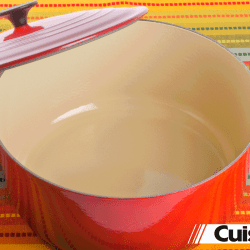
![Beef pot roast in a Dutch oven baked with onions and potatoes, How To Clean An Enamel Dutch Oven [A Complete Guide]](https://kitchenseer.com/wp-content/uploads/2021/12/Beef-pot-roast-in-a-Dutch-oven-baked-with-onions-and-potatoes-250x250.jpg)
